Senior Project Update
 Sunday, May 27, 2012 at 1:28PM
Sunday, May 27, 2012 at 1:28PM It's coming along, but not done. I'm a bit stressed. Lets hope nothing breaks on me before the project showcase. I won't have time to replace any parts.
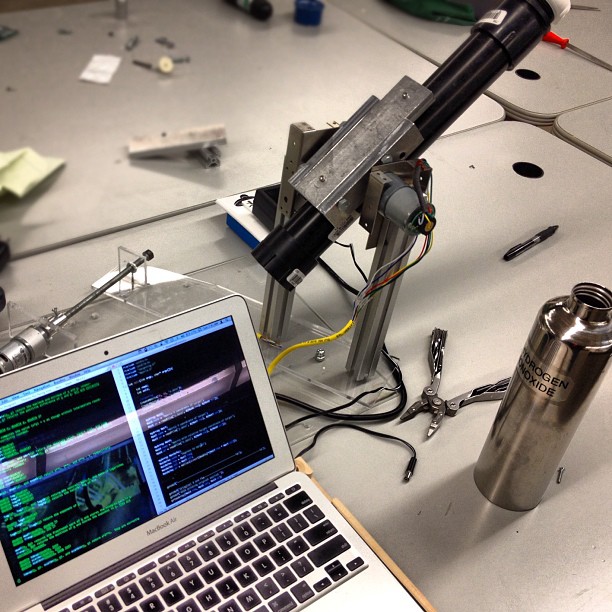
 Sunday, May 27, 2012 at 1:28PM
Sunday, May 27, 2012 at 1:28PM It's coming along, but not done. I'm a bit stressed. Lets hope nothing breaks on me before the project showcase. I won't have time to replace any parts.

 Sunday, May 13, 2012 at 5:08PM
Sunday, May 13, 2012 at 5:08PM Show off that beautiful wallpaper and hide all the desktop icons when you're not using them. This is a very simple extention to hide desktop icons with Alfred. Use the command "Show Desktop" and "Hide Desktop" with these two extentions. Show Desktop icon extention, and the Hide Desktop icon extention. 
 Friday, May 11, 2012 at 8:51AM
Friday, May 11, 2012 at 8:51AM Opening new textEdit documents using Alfred is ok if you dont have any text windows open already. However if you have a textEdit window open or you would like to use Alfred to open a new textEdit window, you can install this script. Just type in 'newtext' into Alfred and he'll launch a new textEdit window.
Nothing too complicated. Just a simple script to get you someplace to write down quick notes or ideas. It also adds a date time stamp into the first line fo the text document. Click here to download the script. Click here to get to know Alfred better
Click here to get to know Alfred better
 Saturday, May 5, 2012 at 9:51PM
Saturday, May 5, 2012 at 9:51PM Wow that was a mouth fulll.
The idea is that a water gun turret needs to be able to quickly identify it’s target and calculate the rotation toward, and elevation to it’s target. Really it's just an excuse to play with cuda and my ongoing water gun turret.
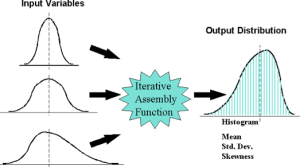
The program should accept a target position relative to the gun, with a known error range from the measurement device and quickly calculate the resulting water gun angle and elevation. The system will assume laminar flow and use known fluid dynamic models in trajectory calculations. A Monte Carlo algorithm will be applied to all variables in the calculations, such as crosswind, fore wind, ambient air pressure, internal system water pressure, Reynolds number, drag force, flow rates, and other variables.
Each variable will have it’s own statical distribution, this will be identified ahead of time and included as input files. The Monte Carlo method requires that all the variables in the calculation be randomized according to their particular distribution, and inputed into the targeting function. This should result in a large number of calculated outputs.
The resulting outputs will represent every possible outcome, with the more likely ones occurring more often. These outputs will be combined to generate a histogram of the final targeting solution. The targeting solution and the resulting histogram will be the final output of this program.
The main issue is that a single complex function is required to run many times with different data sets. This is an ideal problem to solve using the CUDA multicore architecture.
An expert has to verify my fluid dynamic function, and provide reasonable ranges and distribution for such variables such as resistance coefficient. I will run the same simulation experiment in MATHLAB, and in a serial version in C. The final CUDA code will be compared to the MATHLAB and C implementation. Because at no point will a runtime random number generator be used, the resulting output of both systems should always be deterministic and exactly the same for both systems.
 Saturday, May 5, 2012 at 9:06PM
Saturday, May 5, 2012 at 9:06PM It took a bit of time, but here is an example of how to do transcendental functions using only low level add and subtract. The specific problem was sine wave generation on a 32 bit system on a specific DAC, perhaps later I'll abstract it to a more generalized solution. Click on the link to read the article.
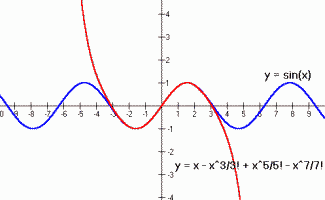
 Monday, March 7, 2011 at 2:41PM
Monday, March 7, 2011 at 2:41PM The kayak is going open source. Expect code, diagrams and gerber files soon. Of course we will try and make this easy for people to follow and put together. You will find those files on the wiki page, but I'll mirror the files on this site too. Stay tuned for updates. The ocean is now wheel chair accessible! Woot! 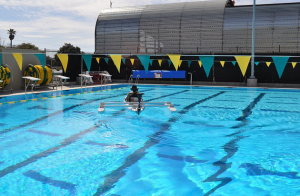
 Monday, February 14, 2011 at 2:09AM
Monday, February 14, 2011 at 2:09AM
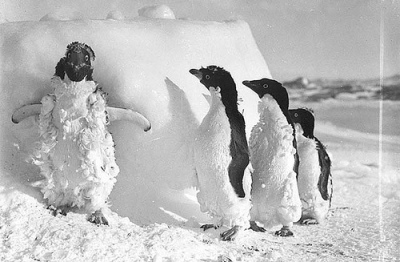 Photographed by Frank Hurley First Australasian Antarctic Expedition, 1911-1914, The penguin chick is molting or losing juvenile feathers. From the collections of the Mitchell Library, State Library of New South Wales. No known copyright. I've decided to make everything available via RSS. Feel free to subscribe, by clicking on RSS above. The front page will be blog based journal form now on that will display any changes to the side projects as they happen. There is also a Webtastic section for just the fun stuff. Enjoy.
Photographed by Frank Hurley First Australasian Antarctic Expedition, 1911-1914, The penguin chick is molting or losing juvenile feathers. From the collections of the Mitchell Library, State Library of New South Wales. No known copyright. I've decided to make everything available via RSS. Feel free to subscribe, by clicking on RSS above. The front page will be blog based journal form now on that will display any changes to the side projects as they happen. There is also a Webtastic section for just the fun stuff. Enjoy.
 Monday, February 14, 2011 at 2:07AM
Monday, February 14, 2011 at 2:07AM Intro and demonstration of interbody and intrabody signaling using simple electronics. The next step is to build a better filter design and then implenent some kind of communications protocol. There is interestng work in Japan over the implementation TCP/IP Body Area done by Koshiji, Fukuro, Shudo Takenaka, and Ken Sasaki. I'm going to start reading that paper now.
Final project for ME405 Mechatronics at Cal Poly San Luis Obispo, done by Roeurn Tourn, Stefan Längle , and Chris Nguyen. Camera guy stopped the recording before Chris started talking, sorry Chris!
Sophmore Final project for CPE-229, assembly language programing with picoblaze on a Xilinx Nexys 2 board. We interfaced a homemade button grid and touch sentive Jello to make a Tic-Tac-Toe more interesting. details